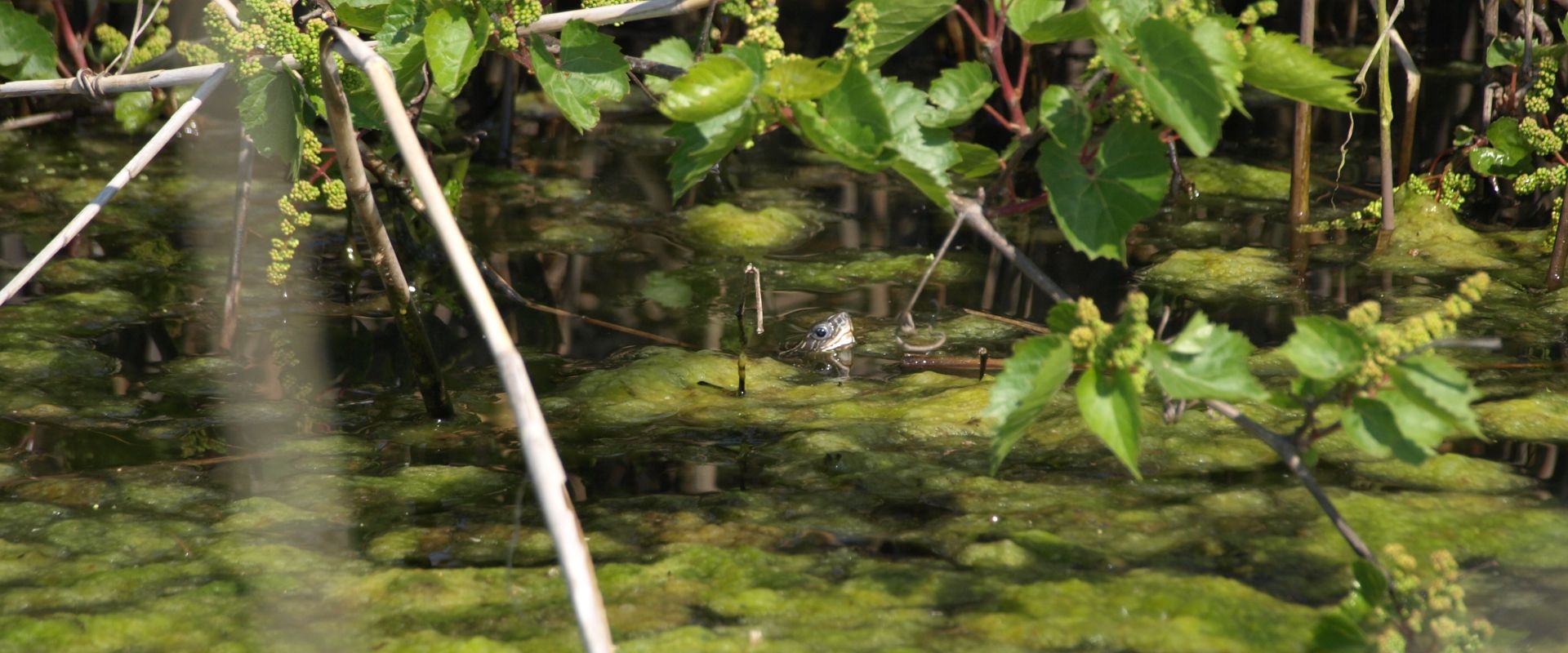Ston field (SE part of Pelješac)
The first mention of Mauremys rivulata in Croatia dates back to 1867., in the area of Stonsko polje and Obmble (Dubrovačka River). The Ston project area is located complitely within the Natura 2000 area SE part of Pelješac and is part of the Dalmatian karst area.
In the entire area of Stonsko polje, there are about 10 ha of favorable freshwater habitats for the Balkan Terrapin, two smaller ponds, two streams (Perunski and Mlinski stream) and a network of irrigation canals that are still in occasional use for agriculture purposes. The lower parts of the field, networked with freshwater and brackish channels, are neglected. Water level in those canals varies seasonally, but also depends on the amount of vegetation. Some of the canals are completely overgrown and dried up. In 2019., Balkan Terrapins, considered locally extinct to that point, were found in one canal where water is supplied throughout the year. This canal is surrounded by overgrown meadows and is itself largely overgrown with dense vegetation which the Balkan Terrapin uses as the sunbathing area.
Through the project activities, a new pond will be created, canals restored, old pond will be cleaned and sustainable agricultural practices will be implemented. This will create sustainable terrestrial and aquatic habitats for the long term survival of the Balkan Terrapin but also for the other species dependent on Mediterranean freshwater habitats.
In order to restore once abundant population of Balkan Terrapin in Ston, a breeding program will be implemented in parallel with the habitat restoration. These project activities will enable a return of high-quality freshwater habitats. In 15-20 years after the end of the project, it may be possible to reach the capacity of Ston field of about 250 individuals. This would mean an increase of about 50 % for the currently estimated population of target species in Croatia, and thus would significantly improve the species conservation status and its chances for survival.



